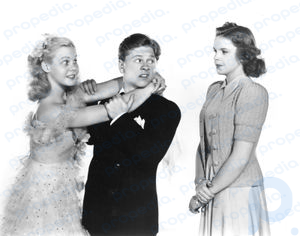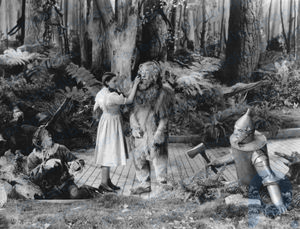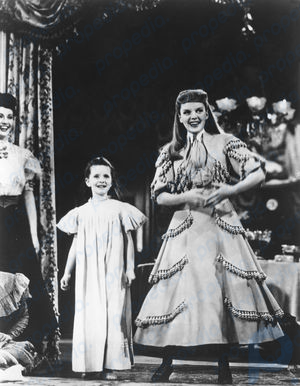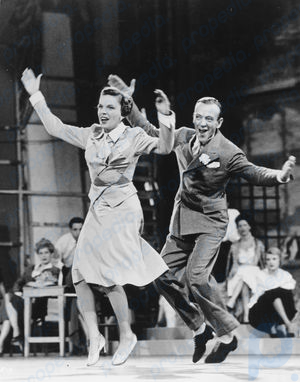What was Judy Garland’s childhood like?
Born Frances Gumm, Garland was the daughter of former vaudevillians who operated a theatre in Grand Rapids, Minnesota. She made her stage debut at age 2½, received her first review in Variety as a 10-year-old singing sensation, and became a juvenile film star as a contract player for MGM, frequently paired with Mickey Rooney.
How did Judy Garland get famous?
Although Garland had gained popularity in her first motion pictures with Mickey Rooney, she became an international star by playing Dorothy in The Wizard of Oz (1939), in which she sang one of her signature songs, “Over the Rainbow,” and for which she won a special Academy Award for “outstanding performance by a screen juvenile.”
What were Judy Garland’s major accomplishments?
Garland gave iconic film performances in The Wizard of Oz (1939), Meet Me in St. Louis (1944), Easter Parade (1948), and A Star Is Born (1954). She is also remembered as the singer of “You Made Me Love You” and “Over the Rainbow” and for the concert album Judy at Carnegie Hall (1961).
What did Judy Garland die from?
Garland died from an accidental barbiturate overdose in London on June 22, 1969, less than two weeks after her 47th birthday. Her exceptional talents and vulnerabilities had made her one of the most enduringly popular Hollywood icons of the 20th century, and her funeral in New York City drew some 22,000 mourners.
Judy Garland (born June 10, 1922, Grand Rapids, Minnesota, U.S.—died June 22, 1969, London, England) American singer and actress whose exceptional talents and vulnerabilities combined to make her one of the most enduringly popular Hollywood icons of the 20th century.
Frances Gumm was the daughter of former vaudevillians Frank Gumm and Ethel Gumm, who operated the New Grand Theatre in Grand Rapids, Minnesota, where on December 26, 1924, at age 2 1/2, Frances made her debut. In 1932—by that time a 10-year-old singing sensation—she received her first rave review from the entertainment news magazine Variety, and two years later, at the suggestion of the comedian George Jessel, she adopted the surname Garland. (She chose the first name Judy shortly thereafter, from the popular 1934 Hoagy Carmichael song of that name.) In September 1935, Judy Garland was signed by the world’s largest motion-picture studio, Metro-Goldwyn-Mayer (MGM), without a screen test.

Her first film appearance as a contract player for MGM was in the short Every Sunday (1936). Her other early films included Pigskin Parade (which she made while on loan to Twentieth Century-Fox in 1936) and Broadway Melody of 1938 (1937), in which she sang “You Made Me Love You.” That was the first of many trademark songs. She began her popular screen partnership with Mickey Rooney in Thoroughbreds Don’t Cry (1937); the pairing continued through Love Finds Andy Hardy (1938), Babes in Arms (1939), Strike Up the Band (1940), Babes on Broadway (1941), and Girl Crazy (1943).


Garland’s winning combination of youth, innocence, pluck, and emotional openness is seen to good advantage in two of her best-known films: The Wizard of Oz (1939) and Meet Me in St. Louis (1944). In the former, her heartfelt expression of vulnerability and youthful longing in what would become another signature song, “Over the Rainbow,” helped make the film one of the most beloved movie classics. It also brought Garland her first and only Academy Award, a special award with a miniature statuette for “outstanding performance by a screen juvenile.” She played her last juvenile role in Meet Me in St. Louis, directed by her future husband Vincente Minnelli (with whom she had a daughter, Liza). In it she sang such hits as “Have Yourself a Merry Little Christmas” and “The Boy Next Door.”

Of the 21 additional films she made in the 1940s, perhaps The Harvey Girls (1946) and Easter Parade (1948) are the best known. Despite placing in the Top Ten box office three times during the 1940s, making more than $100 million for the studio, and being considered the studio’s greatest asset, Garland was granted an early release from her MGM contract in September 1950, following completion of Summer Stock (1950). The following year she returned to the stage, with triumphant performances at the London Palladium and New York’s Palace Theatre. Her comeback was capped with the Warner Bros. musical A Star Is Born (1954), a three-hour showcase for all of Garland’s talents. It was in this film, the last of the three with which she is most associated, that Garland’s persona achieved maturity. Pitted against Dorothy Dandridge (Carmen Jones), Audrey Hepburn (Sabrina), Jane Wyman (Magnificent Obsession), and Grace Kelly (The Country Girl) for the best actress Oscar that year, Garland was favoured to win, but she lost to Grace Kelly in what comedian Groucho Marx (see Marx Brothers) called “the greatest robbery since Brinks” (a reference to the 1950 robbery of the Brinks Building in Boston, which was then the largest U.S. armed robbery).
Garland appeared in five more films, including Judgment at Nuremberg (1961), for which she garnered an Oscar nomination for best supporting actress, and the somewhat autobiographical I Could Go On Singing (1963), her only movie shot outside the United States.
Her film career has long overshadowed her success as a recording artist, but from 1936 to 1947 she cut more than 90 tracks for Decca Records, and she made a dozen record albums for Capitol Records between 1955 and 1965. She frequently made the best-seller charts from 1939 to 1967, working with such top arrangers as Mort Lindsey, Nelson Riddle, Jack Marshall, and Gordon Jenkins. These recordings reveal her sensitivity and intelligence as an interpreter of popular song.
After doctors told her in 1959 that decades of stress from overwork would prevent her from further performance, Garland staged her greatest comeback ever, with a 1960–61 series of one-woman concerts around the world, culminating in New York’s Carnegie Hall. The two-record recording of this concert, Judy at Carnegie Hall (1961), revealed her intense connection to her audiences and proved to be her biggest-selling album. It won five Grammy Awards—including album of the year and best female vocal performance—and spent about a year and a half on the charts, staying at number one for 13 weeks. The album has never gone out of print, and a Fortieth Anniversary Edition was issued on compact disc by Capitol Records in 2001. Further, in 2003 the album was deemed “culturally, historically, or aesthetically” significant and placed on the National Recording Registry.
In the early 1960s Garland appeared often on television, hosting a weekly hour-long variety series, The Judy Garland Show, for 26 episodes during the 1963–64 season. Although she had been signed for a record amount of money, and the show revealed a concert artist at her peak, it was canceled after half a year.
During the mid- to late 1960s, Garland concentrated on concert performances and made appearances on the top television variety and talk shows of the day. A month-long third engagement at the Palace Theatre resulted in another popular album, At Home at the Palace (1967). Garland continued working until her death at age 47 by accidental barbiturate overdose. Her funeral in New York City drew 22,000 mourners.
Over the decades since her death and as the star of The Wizard of Oz, the movie seen by more people than any other in film history, Garland has remained an iconic American entertainer. Singer Frank Sinatra expressed the feelings of countless fans when he said, “She will have a mystic survival. She was the greatest. The rest of us will be forgotten, but never Judy.”
Scott Schechter
